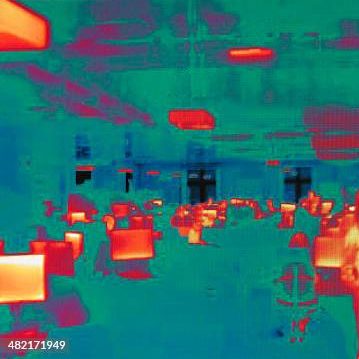Introduction
After many building codes have been updated to require light sensors in order to save energy, most lighting control companies have introduced motion sensors to their products. This feature allows for lights to turn on or off automatically after movement has or has not been detected in a room for a set period of time. While this feature does improve energy efficiency, it consequently causes still occupied rooms to go dark. This is acutely an issue in office buildings, where occupants are often sitting in one location for long periods of time.
In occupied conference rooms there is often a lot of sound emanating around the room as conversations develop over long periods of time. This means that in the middle of a meeting, after some time has passed since someone has walked in or out of the room, the lights will turn off. Considering this, the optimal lighting controls for a conference room would be to have both motion AND sound sensors in order to keep lights on during a meeting.

Project Summary
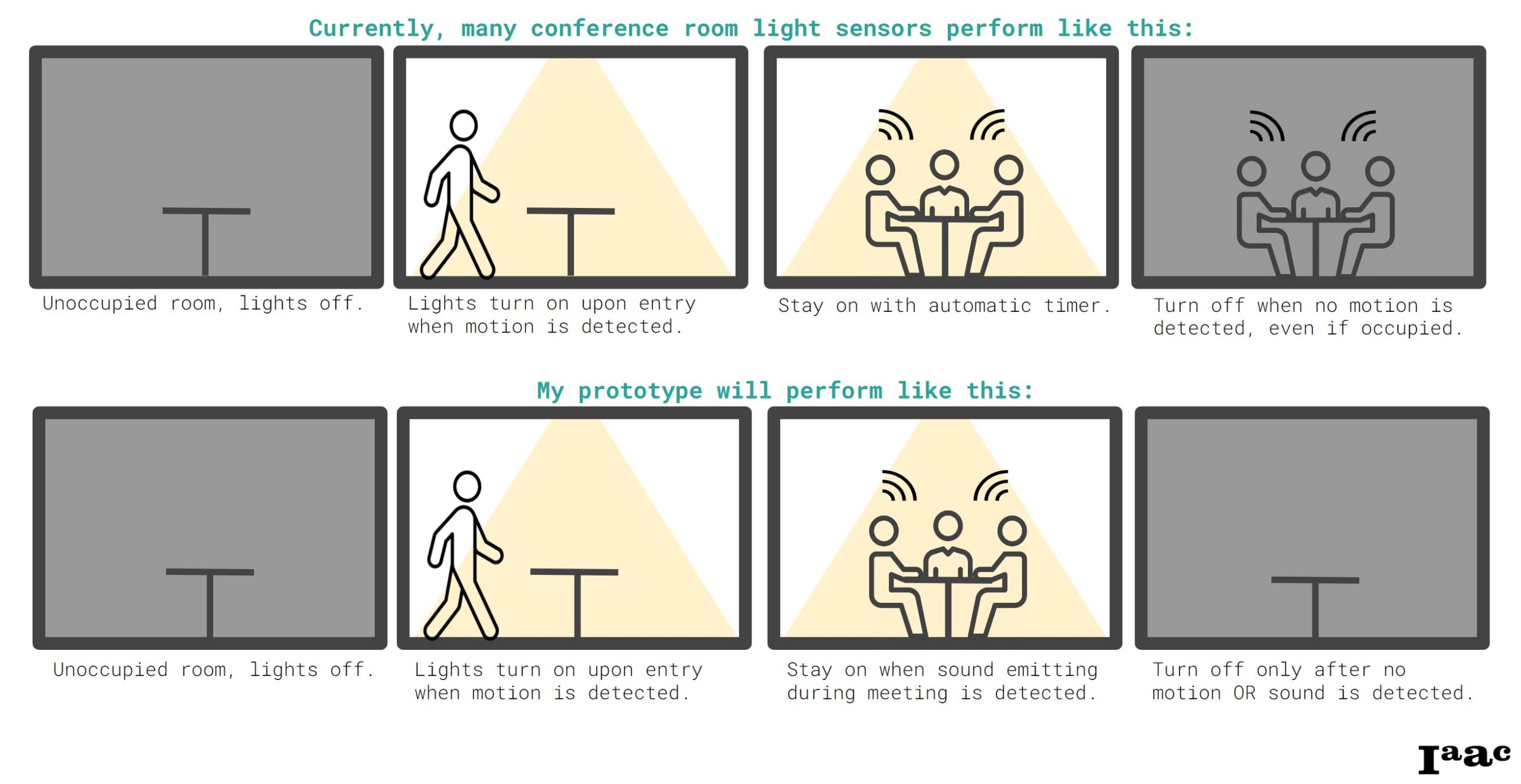
Prototype Details
Using an Arduino Uno Controller Board, I developed a prototype that utilizes the HC-SR501 PIR Motion Sensor Module, and the Sound Sensor Module to activate an LED light to represent the lighting of a typical conference room. The code specifies to turn on the light when either motion or sound is detected, and after some delay, to turn off when no sound or motion has been detected.
Bill of Materials:
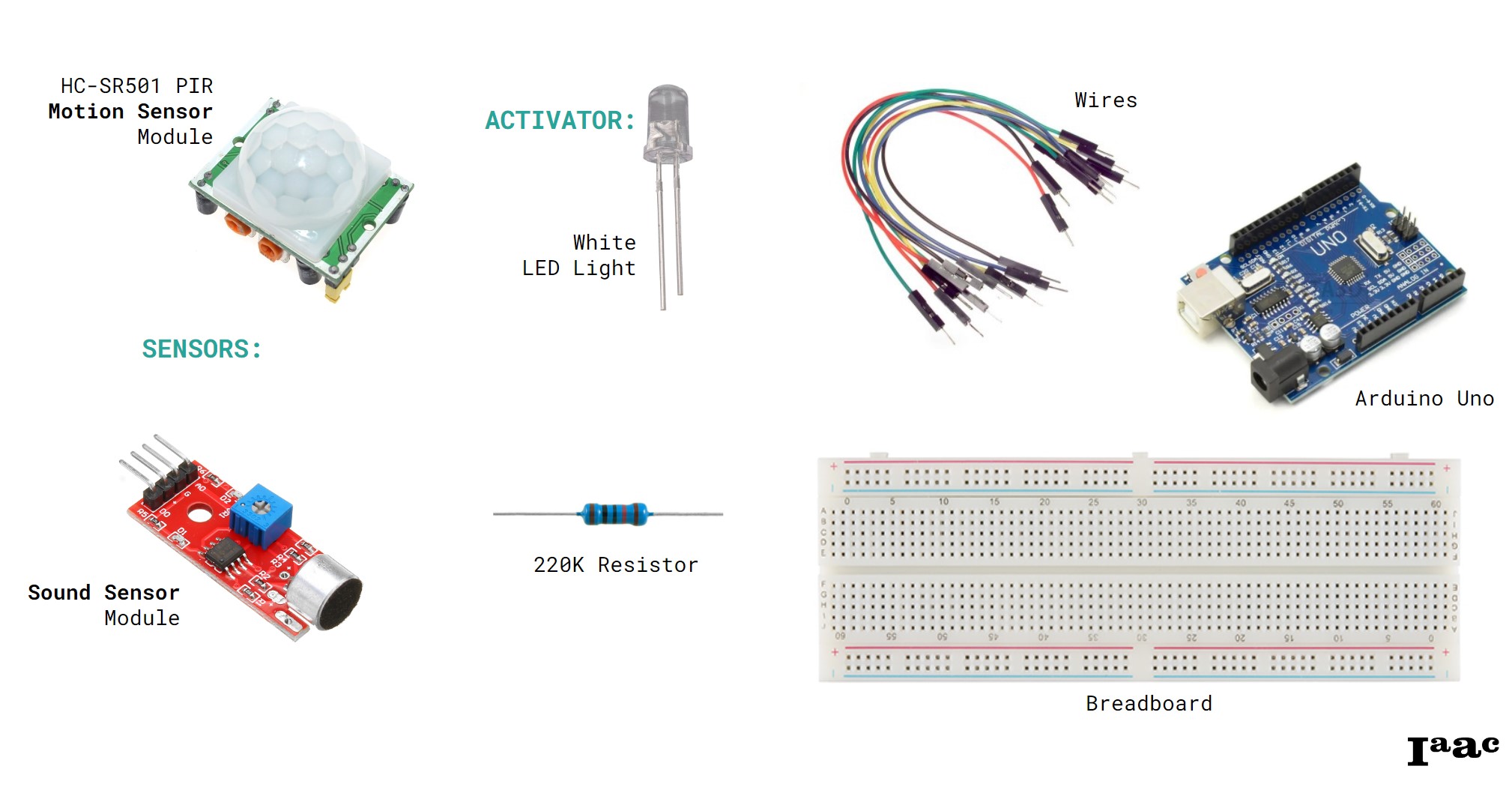
Code and Simulation:
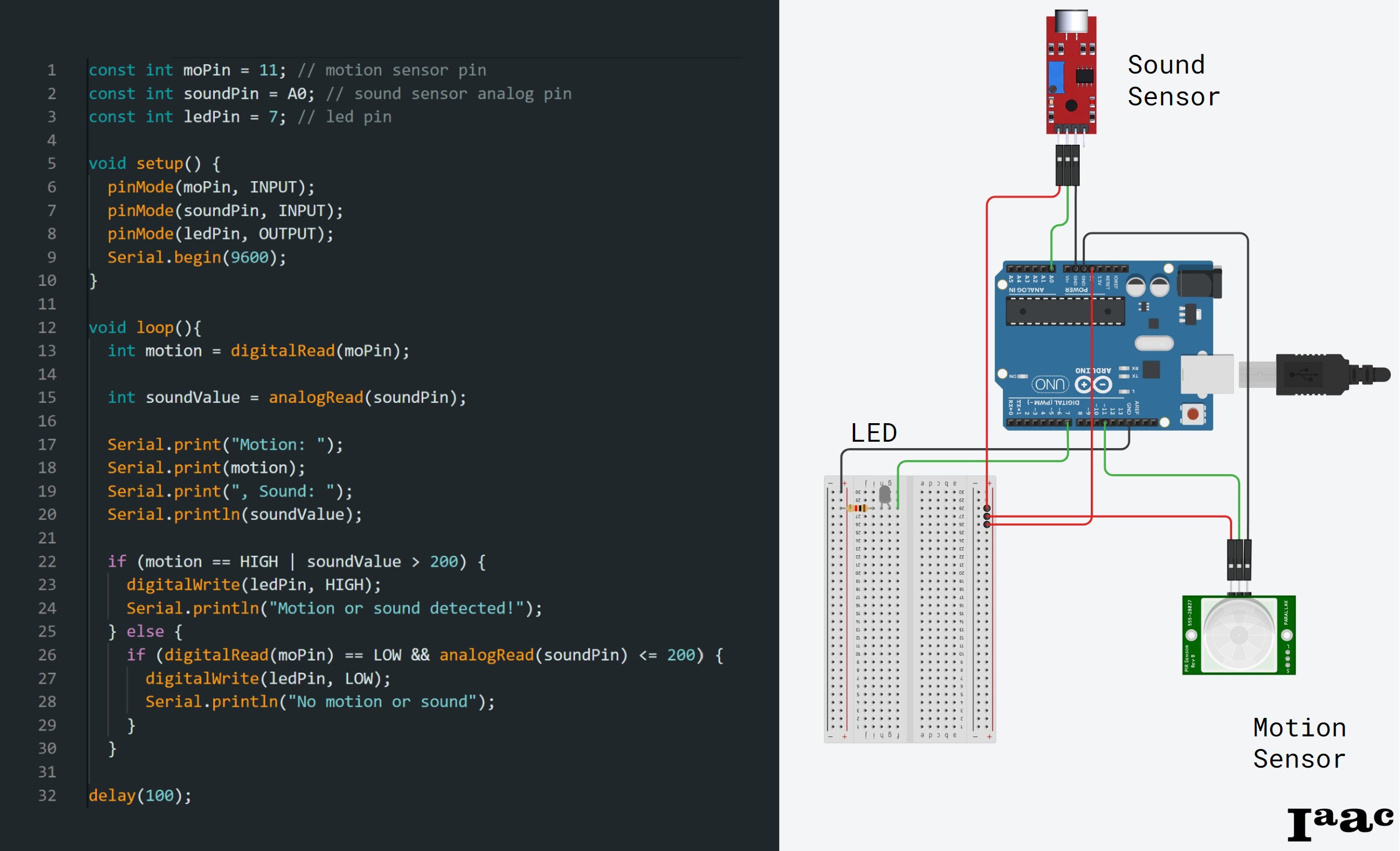
Photographs:
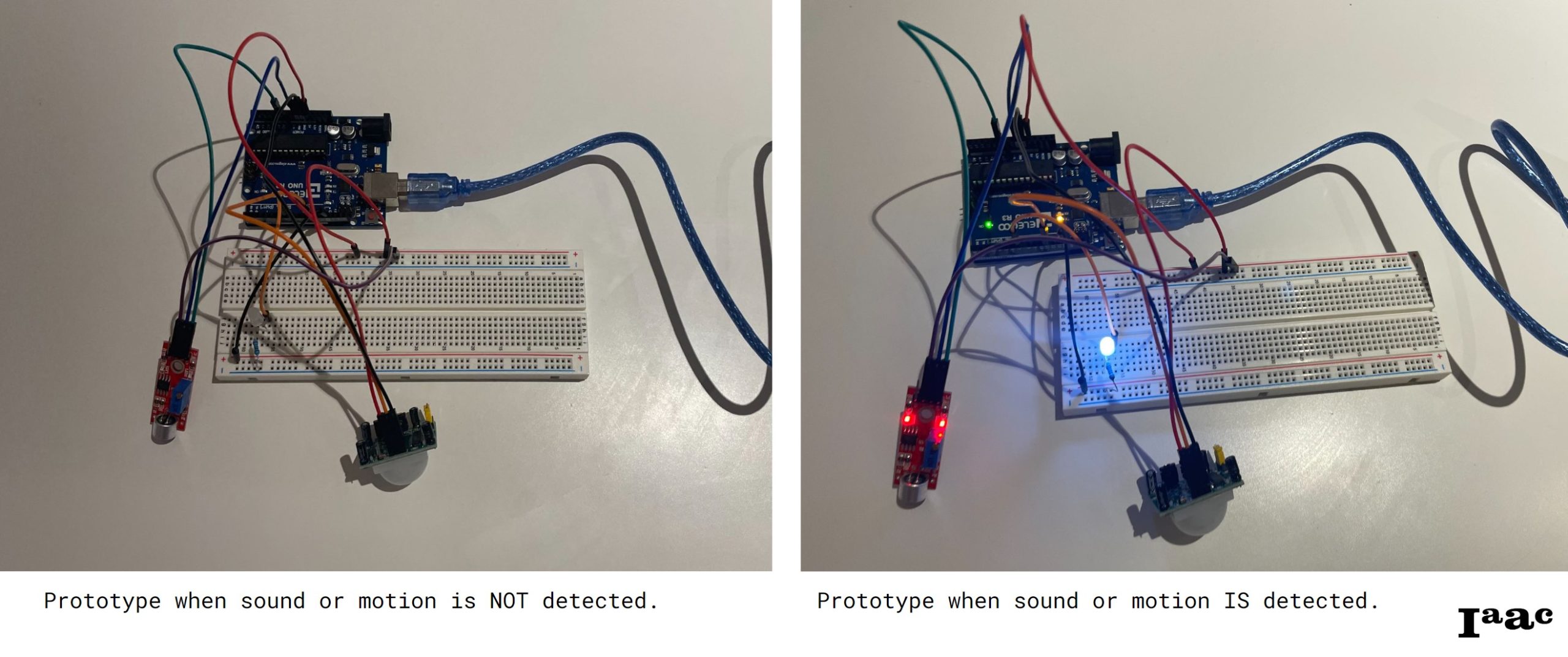
Demonstration Video:
Next Steps:
A next step to consider would be to modify the prototype for an open office space, where less constant collaboration occurs. When an occupant is working at their desk, they often sit in one place and do not speak for some time, as they focus on their tasks. This means that the prototype could go some time without detecting any sound or motion, and turn the lights off even when the space is occupied.
Although adjustments could be made to the delay of the lighting to be over a longer period of time in these types of areas, this would still result in a waste of energy after everyone has left the space. Therefore, in an open office application, an addition of an infrared sensor would be extremely beneficial, as it could detect if there are any occupants in the room, rather than just their sound or movement.
